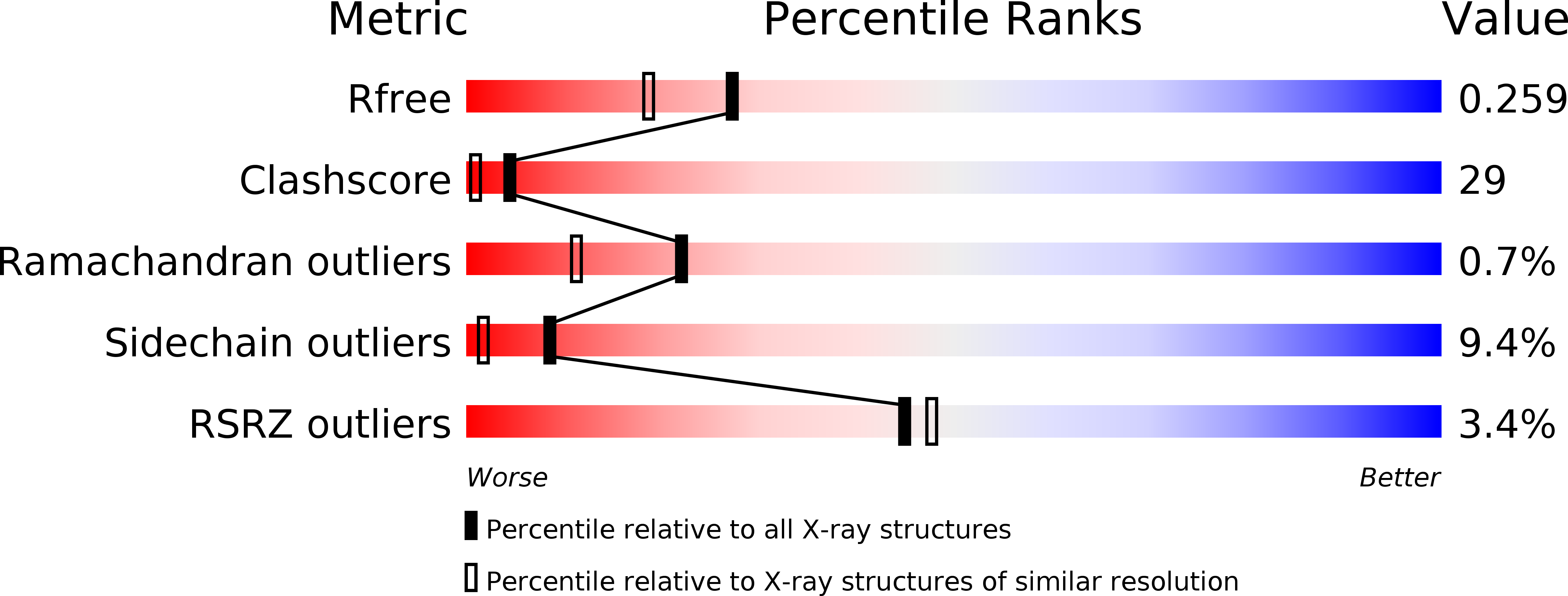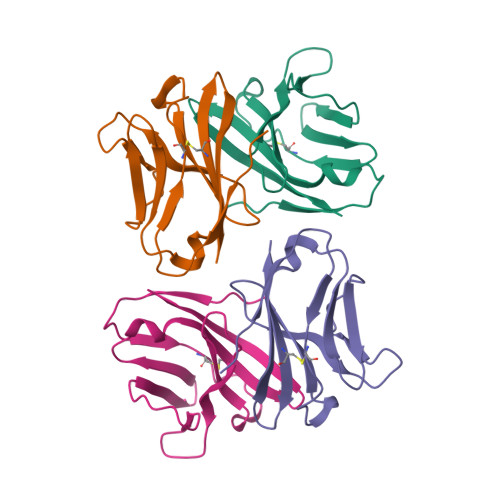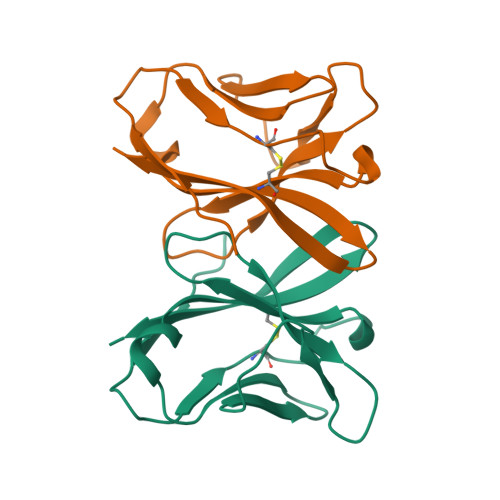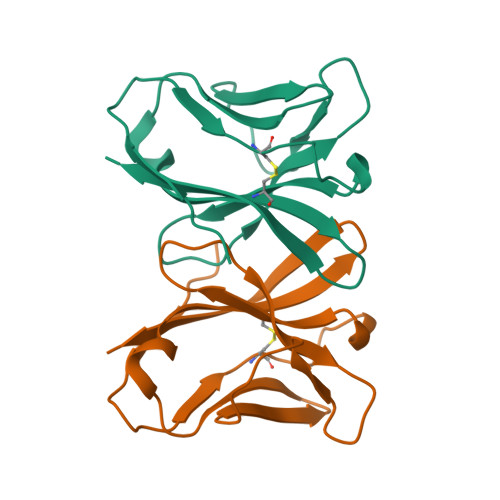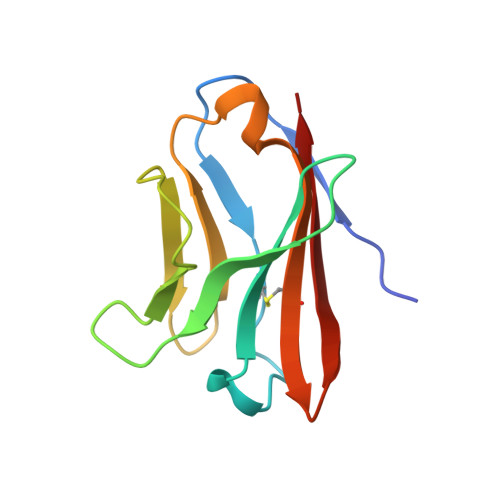A bony fish immunological receptor of the NITR multigene family mediates allogeneic recognition.
Cannon, J.P., Haire, R.N., Magis, A.T., Eason, D.D., Winfrey, K.N., Hernandez Prada, J.A., Bailey, K.M., Jakoncic, J., Litman, G.W., Ostrov, D.A.(2008) Immunity 29: 228-237
- PubMed: 18674935
- DOI: https://doi.org/10.1016/j.immuni.2008.05.018
- Primary Citation of Related Structures:
2QHL, 2QJD, 2QQQ, 2QTE, 3B5T, 3BDB - PubMed Abstract:
Novel immune-type receptors (NITRs) comprise an exceptionally large, diversified family of activating and inhibitory receptors that has been identified in bony fish. Here, we characterized the structure of an activating NITR that is expressed by a cytotoxic natural killer (NK)-like cell line and that specifically binds an allogeneic B cell target. A single amino acid residue within the NITR immunoglobulin variable (V)-type domain accounts for specificity of the interaction. Structures solved by X-ray crystallography revealed that the V-type domains of NITRs form homodimers resembling rearranging antigen-binding receptor heterodimers. CDR1 elements of both subunits of NITR dimers form ligand-binding surfaces that determine specificity for the nonself target. In the evolution of immune function, it appears that a specific NK type of innate recognition may be mediated by a complex germline multigene family of V structures resembling those that are somatically diversified in adaptive immunological responses.
Organizational Affiliation:
Department of Pediatrics, University of South Florida College of Medicine, St. Petersburg, FL 33701, USA.







